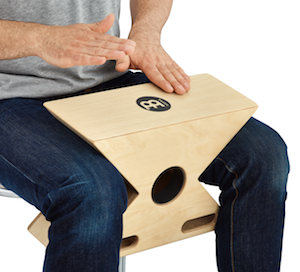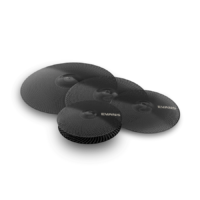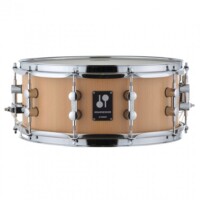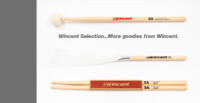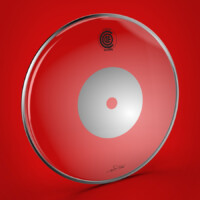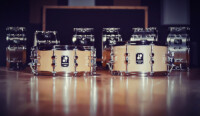|
As you may have noted from my last percussion-based review, I’m no percussionist. Or, at least, I’m an uninspired percussionist anyway. That aside though, I did have some fun with these new, and not so new, instruments from Meinl. First out of the box was the [traditional] cajon. This was made from a fibreboard body with a maple front plate. It has dual ‘snare’ wires at the top on the inside. I had great fun with this. Whilst my actual ability on it isn’t exactly huge, I took it out of the box and sat in front of TV watching the rugby quite happily banging away on it for ten minutes. I did find that there some minor residual rattle from the wires during playing but having said that although you can hear it in the video, you wouldn’t hear it in an actual live situation, particularly with other musicians. Hybrid Slap-Top cajon This is the instrument that kind of threw me a little when I took it out of the box since I’ve never actually seen anything else like it before, hence the reason why I didn’t play it both ways it can be played in the video. Sorry about that Meinl. It’s 14 1/2″ wide and 10” high, with a depth of 5 3/4″. Despite it’s rather strange shape, it felt to me to be quite comfortable to hold and play. I also really quite liked the bongo-type sound it produced. Here’s a video of it being played properly – video here |
Bass Box Ok, it’s a big black box with a hole in the front which you play with a pedal. You also get a big spongey hard foam beater that goes into the pedal of your choice to play it with. The shaft of the beater is angled so you don’t have to modify your pedal in any way. There’s nothing more to it than that really. I found it went well with the Hybrid cajon as a low end addition. Cajon Mallets I guess you could say here there are several versions of one design and then something a little different. First of all, you’ve got the double ended mallet – one large beater head, the other small – and then single versions of the same head. The heads themselves are made of the same spongey hard foam material as the Bass Box beater with a hard maple centre, and produce a strong sound with the level of nuance/volume being determined by which beater is being used. I found them to be nicely made and comfortable to use. Then you’ve got the Shaker Mallet, which I though was quite a cool idea. This is a similar sort of thing to the other mallets but with a shaft made from aluminium with beads inside the shaft which make the shaker element. The sound is quite subtle, but it definitely makes a difference in terms of colour and vibe. |
Shakers These were the Crystal Shaker (soft) and the FX Modulation Shaker. The Crystal Shaker (soft) is a clear acrylic shaker with tiny with balls inside. It’s mainly intended for studio use or lower volume live work. I think if you wanted to use it in a live situation, you’d probably need it under a microphone. I found that it produced a nice subtle, soft, clear sound which reminded me a little of a soft cabasa in some ways. This is also available in a louder, less delicate sounding version. The FX Modulation Shaker is a small shaker with a birch body and a hard black plastic top which has a slight gap between the contrasting surfaces. This allows players to modulate the sound by adding pressure to the top portion and instantly change the pitch. Sound-wise its much louder and more brash than the Crystal Shaker. Heel Tambourine If you’ve ever seen Billy Ward or Shawn Pelton – and you should do that right away if you haven’t – you’ll know they like sticking things in their shoes or around their ankles when they play to add a bit more colour. In this instance, you have what I would describe as a shoe-horn with jingles attached. As you’ll hear from the video, it’s quite loud and even with a nominal amount of time spent with it I managed to get a couple of different sounds from it. The only negative I found with this – and it could have been me – was that it started to come out of my shoe after a few minutes of use which means that I kept having to push it back in. Not a big thing, but I think this could be alleviated by having the inside of the insert ‘roughed up’ in some way to not make it so slippery. All in all, I found these instruments to be well made, nicely thought out and fun to play. A lot of fun, actually. More over at meinlpercussion.com/products David Bateman |

